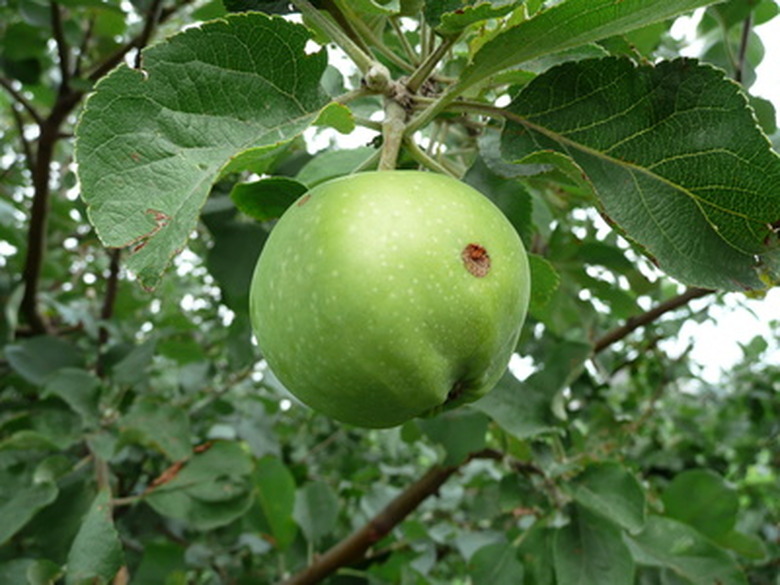Common Apple Tree Diseases In Wisconsin
In Wisconsin, apples are the most commonly planted tree fruit. When choosing which type to plant, Wisconsin gardeners need to look for cold-hardy, early harvest varieties. Apples are susceptible to several diseases, and planting resistant varieties will ensure a good crop and keep you from having to spray with fungicides.
Apple Scab
The apple scab fungus appears as brown to olive-green lesions on leaves and fruit. Lesions on apples turn corky and cause the flesh to crack or become deformed. The fungus can be easily contained by removing fallen leaves in the autumn. If you do not have a disease-resistant cultivar, your tree should be sprayed before it blooms and continually until the flowers appear. If lesions are spotted by early to mid-June, additional spraying may be needed, according to the University of Wisconsin Extension. According to Kearneysville Tree Fruit Research and Education Center, most of the major cultivars are susceptible to apple scab fungus. Resistant cultivars include 'Redfree,' 'Goldrush' and 'Pristine.'
- In Wisconsin, apples are the most commonly planted tree fruit.
- Apples are susceptible to several diseases, and planting resistant varieties will ensure a good crop and keep you from having to spray with fungicides.
Fire Blight
Fire blight is a bacterial disease common in warm, wet weather. It can kill blossoms, limbs, shoots and even the entire tree. Symptoms are flowers and leaves that turn dark brown and young branch tips that have curled and look like a shepherd's crook. Fire blight can be controlled by pruning infected branches when the tree is dormant and by planting disease-resistant cultivars. Cultivars that are particularly susceptible include 'Fuji,' 'Braeburn' and 'Jonagold,' according to KTFREC.
Cedar-Apple Rust
Cedar-apple rust is a fungal disease. Its symptoms include small, round, yellow-orange spots on fruit and leaves. Leaves that are heavily infected may drop prematurely. The juniper (red cedar) is also a host, so apple trees should not be planted near these evergreens. Fungicidal sprays containing ferbam or thiram can be used to control rust, according to the UW Extension. Varieties that are immune to cedar-apple rust include 'Rome,' 'Wealthy,' 'Imperial' and 'Golden Delicious.'
- Fire blight is a bacterial disease common in warm, wet weather.
- The juniper (red cedar) is also a host, so apple trees should not be planted near these evergreens.
